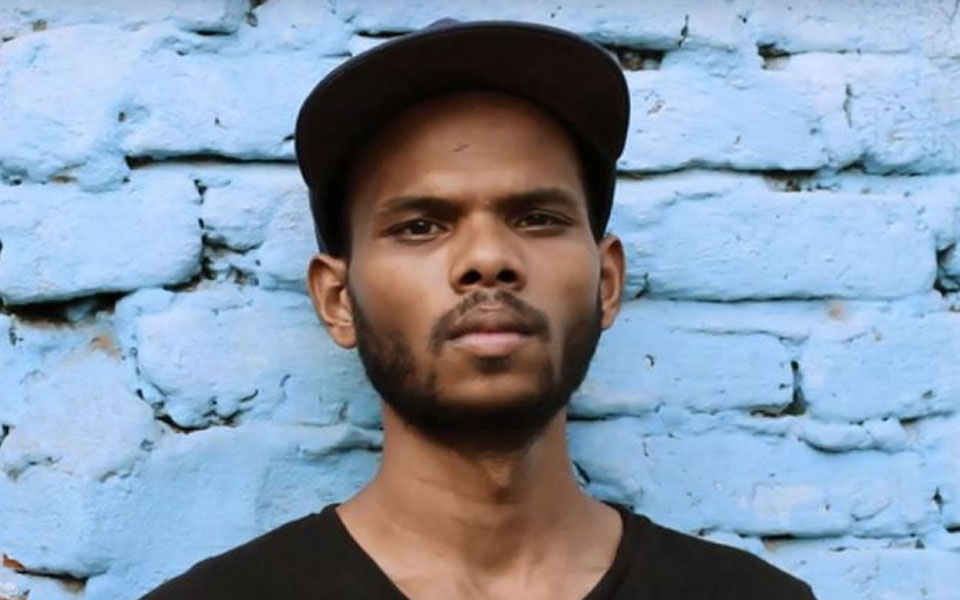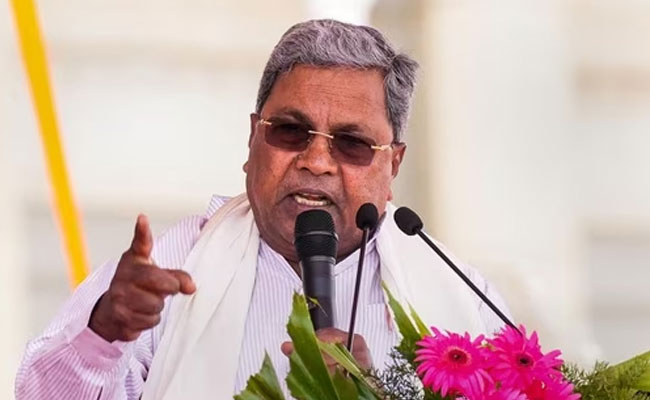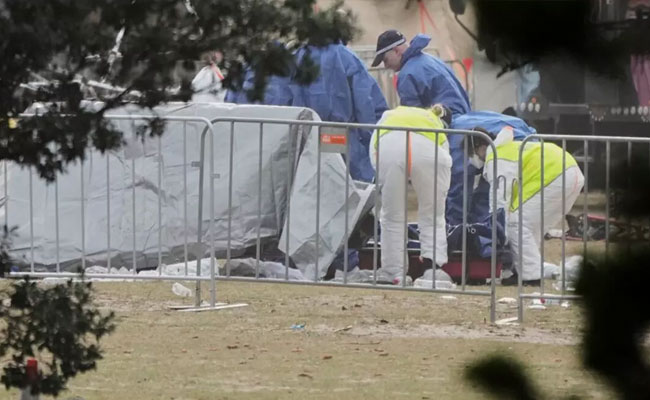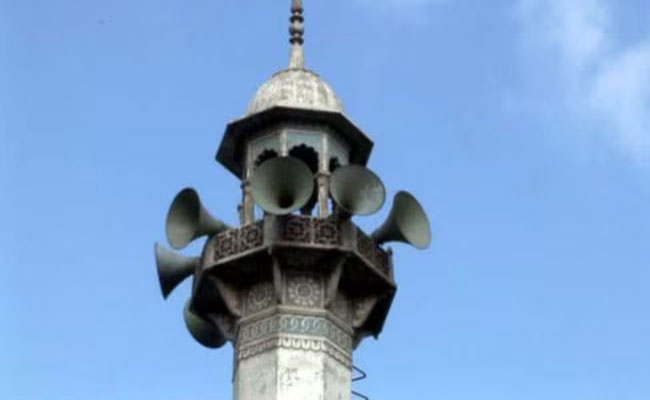Hip-hop music and its humble origin as a counter-culture against racial discrimination in the United States is well known. The African-American artistes articulated their woes against the white oppressors through this genre of music, also known as rap music.
Since then, this music form has been considered as the voice of the voiceless around the globe. In spite of India having several rappers, only a few have addressed serious social issues.
Sumeet Samos, a JNU student who hails from Tentulipadar village of Odisha, recently released his first hip-hop single 'Ladai Seekh Le' (Learn to Resist), on the caste discrimination in India. The video music begins with Samos' own experiences and addresses the various discriminations faced by the Dalits. The lyrics (in Hindi) poses several questions to higher castes and demands fellow Dalits to 'learn resistance'.
Anti-caste activist
A post-graduate in Spanish and Latin American Literature, Samos calls himself an 'anti-caste student activist'. He has been active in Ambedkarite movements in the JNU campus. He says he is not particularly 'proud or ashamed' of being born and brought up in a Dalit community, but rather thinks of it as part of his historic identity.
It is the Dalit literature and interactions with various political groups that made him think about presenting his views on caste discrimination. His interest in hip-hop music led him to choose this medium for that.
"I realised that there was an instinct in me which pushed me towards this and so yeah, given the reach of the medium and since no one from our community had done it before, I thought I should get into it," says Samos.
Inspired by black singers like Joyner Lucas, Childish Gambino, Kendrick Lamar and Tupac Shakur, Samos says their voice against gun violence, illegal incarceration and questioning white supremacy etc makes him use music as a major tool to fight injustice. "Therefore, I try to follow their methods but under my own local context," he says.
Caste discrimination
'Ladai Seekh Le' begins with Samos' articulating about an extended caste discrimination in JNU campus. He says in spite of having good grades in the examination, he was denied scholarships and recommendation letters. Samos, through the video song, calls it a "brutal form of discrimination he faced in JNU."
"JNU is just hyped to be one progressive space but has a history of opposing affirmative actions for marginalised sections - for both students and faculties," opines the 24-year-old student.
He alleges discrimination based on caste in the interview for courses in JNU. "The Left speak on behalf of marginalised sections but are least bothered about the reality," averse Samos. "I think it is their desire to maintain hegemony over us," he adds.
Oppressed people in India have come up with various art forms to fight against the injustice they face on a daily basis and propagate emancipatory politics. Samos cites examples like "the Dalit Lokshahirs of Maharashtra and the Chamar pop singers of Punjab like Amar Singh Chamkila and Lal Singh Dil."
Unlike in America, in India hip-hop did not flourish among the marginalised sections. Singers from the upper classes dominated the scene for years. According to Samos, the reasons can be attributed to the music market and investments like capital, studio etc. "The upper caste people had all these requirements and they appropriated it soon as part of the centuries-old tradition to take up anything which could provide fame and influence in order to maintain supremacy over the marginalised," he says.
However, there are artistes from the marginalised sections who understand the power of hip-hop and explore its possibilities to fight day-to-day exploitations in the society. In Samos' opinion, the new changes make "Hip-hop more transformative." And he is hopeful that "groups like 'Casteless Collective' (a band from Chennai) and individuals like me will take this journey forward by bringing in the anti-caste discourse in hip-hop."
The video ends with the graffiti calling 'Free Chandrashekhar Ravan,' the co-founder of Bhim Army, who is in Uttar Pradesh jail for months under draconian National Security Act (NSA) for his alleged involvement in Saharanpur violence in May last year.
courtesy : deccanherald.com
Let the Truth be known. If you read VB and like VB, please be a VB Supporter and Help us deliver the Truth to one and all.
Bengaluru (PTI): Karnataka Chief Minister Siddaramaiah on Tuesday said that the union government led by Prime Minister Narendra Modi, attempting to change the name and structure of the MGNREGA, has itself exposed its "hatred" towards the poor and towards Mahatma Gandhi.
He also accused the Centre of "altering" the very structure of the scheme, by shifting nearly 40 per cent of the cost onto the state governments, and called Modi "anti federal".
Suggesting that the NDA government at the Centre start a "Ministry of Name Change", with the Prime Minister himself holding that portfolio, the CM warned of a statewide agitation against this name change move.
The Viksit Bharat Guarantee for Rozgar and Ajeevika Mission (Gramin) (VB-G RAM G) Bill, 2025, that seeks to replace the existing rural employment law MGNREGA, was introduced in the Lok Sabha on Tuesday amid strong objections by the opposition to the "removal" of Mahatma Gandhi's name from it.
ALSO READ: Slain Australia beach shooting suspect native of Hyderabad: T'gana police
"The Union government led by Prime Minister Narendra Modi, which is attempting to change the name and structure of the Mahatma Gandhi National Rural Employment Guarantee Scheme (MGNREGA), has itself exposed its hatred towards the poor and towards Mahatma Gandhi," Siddaramaiah said in a statement.
Implemented by the UPA government 20 years ago, the MGNREGA scheme has played a crucial role in eradicating unemployment and poverty in rural areas, he said, adding that "this scheme, which guarantees the right to employment to every individual, has received praise from economists both in India and abroad."
Noting that MGNREGA was a genuine form of employment guarantee, the CM said the proposed new structure under the Modi government strips away that guarantee and places the assurance of work at the whims of political leaders.
"This will further deepen caste discrimination and social inequality," he claimed.
Highlighting that the NDA government has altered the very structure of MGNREGA, a scheme whose entire expenditure was earlier borne by the Central government, by shifting nearly 40 per cent of the cost onto the state governments, Siddaramaiah said this stands as clear evidence of the "anti-federal attitude" that Prime Minister Modi has followed ever since coming to power.
"This move will also increase the migration of poor people in search of work as the proposed form does not guarantee employment in their own location -- forcing families to travel long distances to survive," he said.
Naming this scheme after Mahatma Gandhi, who sowed the dream of Gram Swaraj, was a meaningful decision, the CM said, "While Prime Minister Narendra Modi indulges in praising Gandhi during his foreign tours, within the country he has consistently engaged in attempts to erase Gandhi's legacy from key national programmes. From a parivar that seeks to glorify Gandhi's assassin Godse, what different conduct can one really expect?"
"Narendra Modi is widely known for simply changing the names of landmark schemes launched by the UPA government rather than preserving or strengthening them. It would be more appropriate for this government to start a 'Ministry of Name Change,' with the Prime Minister himself holding that portfolio," he said.
More than 25 flagship programmes launched during earlier governments were merely renamed or repackaged by the present regime, the CM further said, listing out that the Nirmal Bharat Abhiyan was rechristened as the Swachh Bharat Mission, while the Basic Savings Bank Deposit Account scheme was rebranded as the Pradhan Mantri Jan Dhan Yojana, among others.
"These changes reflect a consistent pattern of altering names rather than fundamentally strengthening or expanding the original intent of these welfare initiatives," he added.
Stating that the Congress party and state government strongly condemn this "anti-people" decision of the Narendra Modi government, which has snatched food from the plates of the poor, insulted Bapu, and attempted to strangle state governments financially, Siddaramaiah warned about launching a statewide agitation against this move.
"The responsibility of preserving the MGNREGA scheme in its original form must also be taken up by the lakhs of beneficiaries of the scheme. They must hold the BJP leaders of the state accountable and exert pressure on them to raise their voices against this injustice, rising above party lines," he said.





